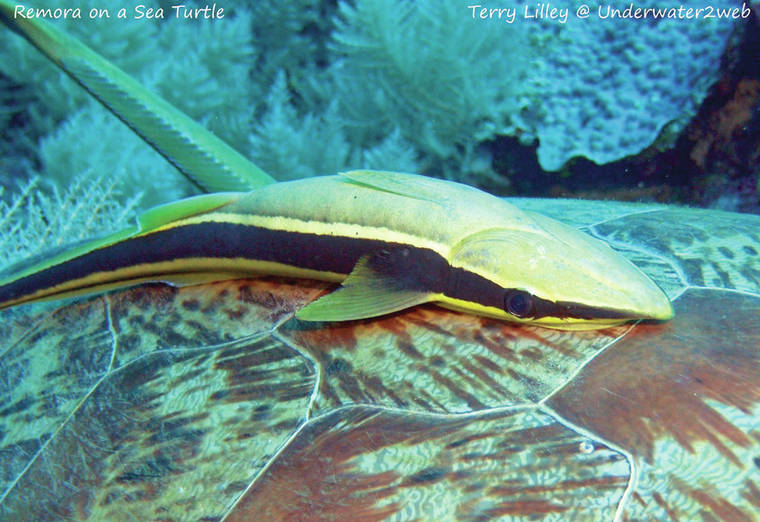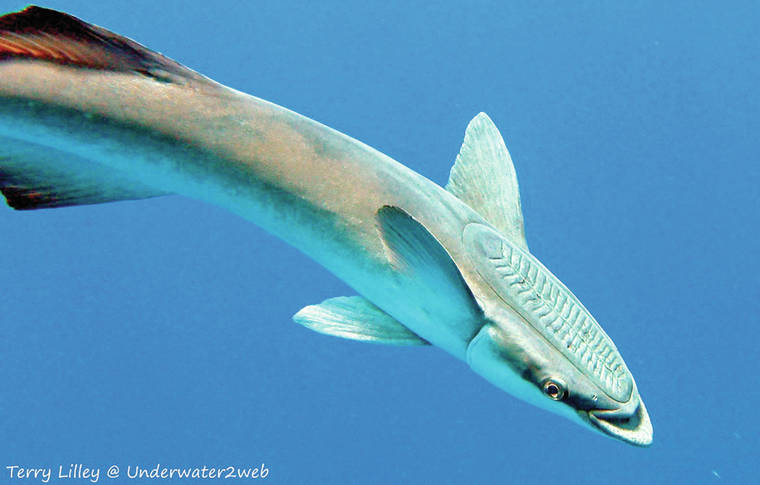The Remora is one of the most unusual fish in Hawaiian waters and they are a pest to many of the larger sea creatures. These fish can grow to be over two feet long and they have a modified dorsal fin on their head that acts like a suction cup.
The Remora is one of the most unusual fish in Hawaiian waters and they are a pest to many of the larger sea creatures. These fish can grow to be over two feet long and they have a modified dorsal fin on their head that acts like a suction cup.
The fish is a hitchhiker and it attaches onto sharks, dolphins, sea turtles, rays, whales and even large predator fish. The Remora places the top of its head onto the larger animal and then applies pressure to its suction cup on its head and becomes firmly attached. The faster the larger animal swims the tighter the suction cup becomes and the remora is very hard to remove once it has attached to the belly of a larger animal.
The Hawaiian name for the Sharksucker is leleiona which means to slow down. Some sharks may have five or six remoras clinging to them and this can slow down the movements of the shark. The name remora comes from an old Spanish name that also means to slow down because some ships had hundreds of remoras attached to the ships hull which caused the ship to go slower.
The remora wants a free ride so it can get a free meal. When the shark or turtle feeds the remora gobbles up some of the scraps of food that larger animals miss.
Most larger sea creatures just ignore the remoras because they have a hard time getting rid of them but the dolphins will jump out of the water and spin to try and remove their pesky hitchhikers.
We were diving in Palau when we came upon a free swimming remora that was almost three feet long. The very fast swimming remora tried to attach to the scuba tank of one of the divers. The remora tried for over ten minutes to attach to the diver but was not successful because the diver kept knocking it away with his camera. After a while the remora tried to attach to another diver then tried to attach to me. I kept spinning in circles to shoot video of the remora and the crazy fish followed us all the way back to the boat.
You can see leleiona in action on my underwater educational web page at www.underwater2web and also follow my weekly marine life education post on my Instagram @terry.lilley.
•••
Terry Lilley is a marine biologist living in Hanalei Kauai and co-founder of Reef Guardians Hawaii, a nonprofit on a mission to provide education and resources to protect the coral reef. To donate to Reef Guardians Hawaii go to www.reefguardianshawaii.org.

Subscribe today for unlimited access.
Already a subscriber?
Login
Not ready to subscribe?
Register for limited access.
If you have a print subscription but require digital access,
activate your account.







Can u eat them?